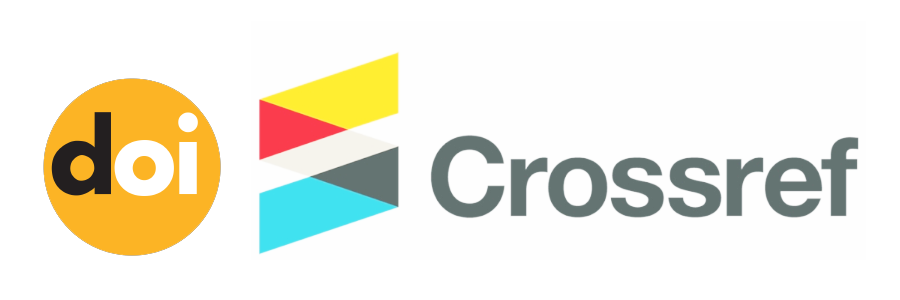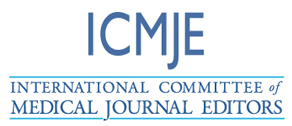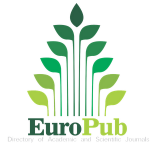The Awareness of the Medical and House Officers about Child Management at Omdurman Military Dental Hospital (Sudan) in 2020
DOI:
https://doi.org/10.55677/IJCSMR/V3I9-01/2023Keywords:
awareness, medical, house officers, child managementAbstract
Back ground: The first dental visit is crucial in the formation of the child’s attitude toward dentistry and future treatment success. A dental appointment is a stressful situation, which raises children’s anxiety level and avoidance behavior. Several behavioral management approaches have been practiced to reduce distress during dental treatment, such as tell show-do, distraction, modeling, hypnotism, and pharmacological means.
Objective: To assess the awareness of the dentists (house and medical officers) about child management at Omdurman Military Hospital in 2020.
Methods: A destructive cross sectional study, with a sample size of 104 medical and house officers were recruited into the study. Data was collected using a self-administrated closed- ended questionnaire. The questionnaire included demographic (age, gender, residence) and other parts that included awareness about knowledge and attitude regarding child management. Data was analyzed with the aid of Microsoft Excel and the SPSS version 25.0 statistical software program (SPSS, Inc., USA).Results were presented in the form of tables, figures and, texts.
Results: The results of this study showed that (95%) of participants studied child behavior management in their curriculum. However, (44%) of them got their knowledge from the internet. The majority of dentists used the Tell- Show- Do technique (68%), and (53%) of the participants in this study thought that parent presence during the treatment was necessary. Also, about (90%) of participants thought that the use of audiovisual methods during treatment was useful, and (96%) of them thought that the first visit impression was a critical issue for ultimate success in future treatment. 45 % of participants had awareness about child management.
Conclusion: The tell show do technique is the most used technique among house officers and medical officers in Omdurman military hospital , presence of parents is important as well as using advance technique , 45% of the participants had awareness about child management.
References
Patil VH, Vaid K, Gokhale NS, Shah P, Mundada M, Hugar SM. Evaluation of effectiveness of dental apps in management of child behaviour: A pilot study. Int J Pedodontic Rehabilitation. 2017;2:114-18.
Rajeswari SR, Chandrasekhar R, Vinay C, Uloopi KS, RojaRamya KS, Ramesh MV. Effectiveness of Cognitive Behavioral Play Therapy and Audiovisual Distraction for Management of Preoperative Anxiety in Children. Int J ClinPediatr Dent. 2019;12(5):419-422.
Sharma A, Kumar D, Anand A,Mittal V, Singh A, Aggarwal N. Factors predicting Behavior Management Problems during Initial Dental Examination in Children Aged 2 to 8 Years. International Journal of Clinical Pediatric Dentistry. 2017;10(1):5-9.
Khandelwal M, Shetty RM, Rath S. Effectiveness of Distraction Techniques in Managing Pediatric Dental Patients. Int J ClinPediatr Dent. 2019;12(1):18-24.
Sharath A, rekka P, Muthu MS,rathnaPrabhu V, Sivakumar N. Children’s behavior pattern and behavior management techniques used in a structured postgraduate dental program. J IndIanSocPedod Prevent dent. 2009:1(27).
Khandelwal D, Kalra N, Tyagi R, Khatri A, Gupta K. Control of Anxiety inPediatric Patients using "Tell Show Do" Method and Audiovisual Distraction. JContemp Dent Pract. 2018;19(9):1058-1064.
Shindova M, Knowledge and Attitudes of Dental Practitioners Regarding the Use of Behavior Management Techniques for Paediatric Dental Patients.Folia Medica .2022;64(1):128-133.
American Academy of Pediatric Dentistry. Behavior guidance for the pediatric dental patient. The Reference Manual of Pediatric Dentistry. Chicago, Ill.: American Academy of Pediatric Dentistry; 2022:321-39.
Strøm K., Rønneberg A., Skaare A.B. Espelid I, Willumsen T. Dentists’ use of behavioural management techniques and their attitudes towards treating paediatric patients with dental anxiety. Eur Arch Paediatr Dent. 2015:16, 349–355.
ownsend JA. Wells MH. Behavior guidance in the pediatric patient. In: Nowak AJ, Christensen JR, Mabry TR, Townsend JA, Wells MH. eds. Pediatric Dentistry -Infancy through Adolescence. 6th ed. St Louis, Mo., Elsevier-Saunders Co.; 2019:352-70
Kawia HM, Mbawalla HS, Kahabuka FK. Application of Behavior Management Techniques for Paediatric Dental Patients by Tanzanian Dental Practitioners.The OpenDentistry Journal, 2015: 9.
Polo CG, Vilches AA, Ribas D, SeiquerAC, Montero J.Behaviour and Anxiety Management of Paediatric Dental Patients through Virtual Reality: A Randomised Clinical Trial. Journal of Clinical Medicine.2021;10(14);3019.
Costa LR, Bendo CB, Daher A, Heidari E, Rocha Rs, Moreira APDSC, Moura LS, Banerjee A, Newton JT, Hosey MT. A curriculum for behavior and oral healthcare management for dentally anxious children –Recommendation from the Children Experiencing Dental Anxiety: Collaboration on Research and Education (CEDACORE).International Journal of Pediatric Dentistry .2020;30(5):556-569.
Downloads
Published
How to Cite
Issue
Section
License
Copyright (c) 2023 International Journal of Clinical Science and Medical Research

This work is licensed under a Creative Commons Attribution 4.0 International License.











